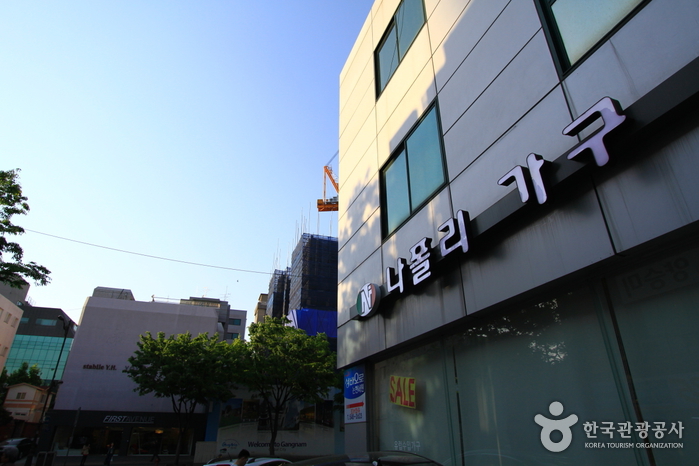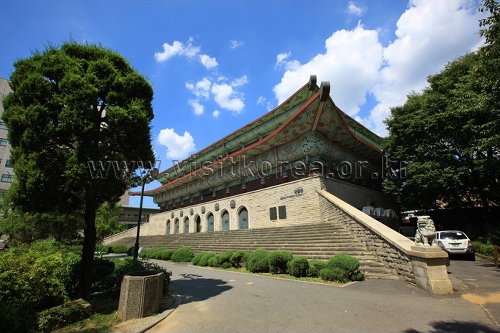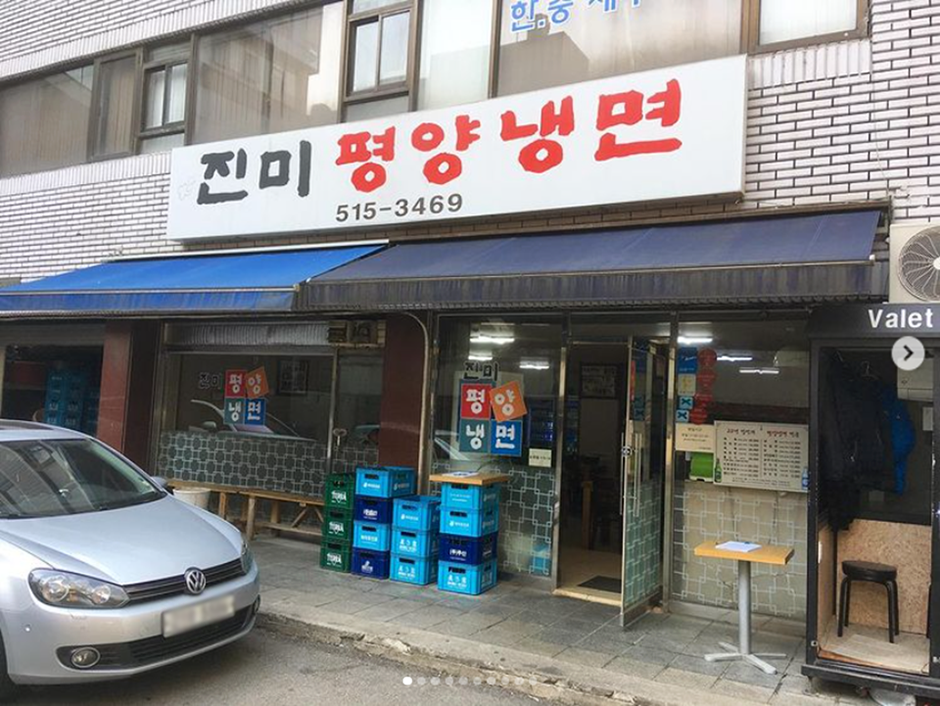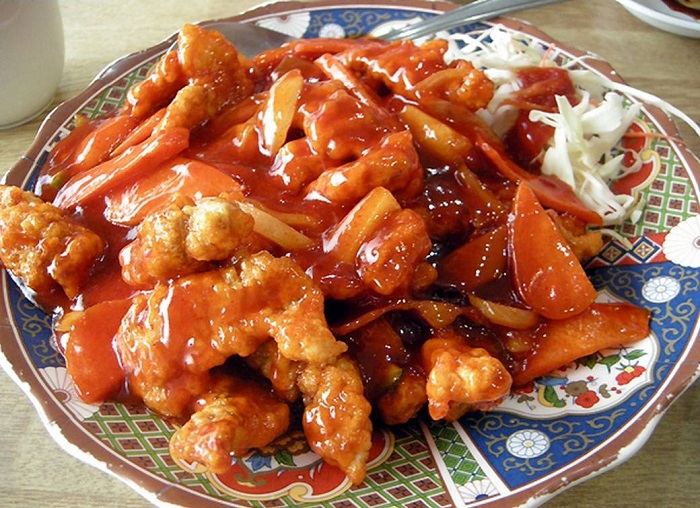Nonhyeon Furniture Street (논현가구거리)
8.2Km 2025-03-16
106 Hakdong-ro, Gangnam-gu, Seoul
Nonhyeon Furniture Street, extending over 900 meters from Nonhyeon Station to Hakdong Station on the Seoul Subway, is renowned for its dense aggregation of furniture stores. Established as a dedicated furniture street in 1970, it now features showrooms and sales outlets from over 100 furniture companies. This destination allows visitors to browse and compare an extensive variety of furniture in one convenient location, including design furniture, craft furniture, kitchen sets, office furnishings, and imported pieces. Additionally, it hosts the annual Gangnam Design Week, a prominent event showcasing the latest trends in furniture design.
Olive Young - Cheongdam Sageori Branch [Tax Refund Shop] (올리브영 청담사거리)
8.2Km 2024-04-17
8, Dosan-daero 89-gil, Gangnam-gu, Seoul
-
Hanssem Flagship store - Nonhyeon Branch (한샘플래그샵 논현점)
8.2Km 2016-12-13
148, Hakdong-ro, Gangnam-gu, Seoul
+82-2-542-8558
Hanssem Flagship store in Nonhyeon-dong opened in 2000 with a total area size of 5610㎡, featuring various furniture and household items available for one-stop shopping.
The showroom gives customers ideas of what they might like to see in their own homes or offices. There’s a wide assortment of items organized into collections such as furniture for newlywed couples, children of different ages and gender, home office, and luxury living.
The store strives to provide a complete design experience for its customers by offering sales, assembly and service altogether.
Columbia - Konkuk Univ. Branch [Tax Refund Shop] (컬럼비아 건대)
8.2Km 2024-04-16
1F, 59, Dongil-ro 20-gil, Gwangjin-gu, Seoul
-
Sejong University Museum (세종대학교 박물관)
8.2Km 2022-09-16
209, Neungdong-ro, Gwangjin-gu, Seoul
+82-2-3408-3876
Sejong University Museum exhibits folk art, wooden crafts, clothing, accessories, pottery, paintings and calligraphy collected for over 40 years by the couple who founded the present day Sejong University, Dr. Ju Young-ha and Dr. Choi Ok-ja. This museum has its origins in the Soodo Gallery, which was built in Chungmuro, the campus’ original location, in 1959. Needing more space to house additional artifacts, the museum moved to its current location, which first opened on May 5, 1973 in a four-story concrete building inspired by traditonal tower design from the Baekje era. This building was later expanded on May 20, 1977.
After the university’s name was changed to Sejong University in 1979, the museum was also renamed the Sejong University Museum. The museum showcases unique artifacts to both scholars and students from home and abroad in contribution to the research of Korea’s culture, arts, and archeology.
Top50 Glasses [Tax Refund Shop] (으뜸50안경)
8.2Km 2024-06-27
1F, Bldg 6, 205 Sinbanpo-ro, Seocho-gu, Seoul
-
Jinmi Pyeongyang Naengmyeon (진미평양냉면)
8.2Km 2024-02-22
305-3 Hakdong-ro, Gangnam-gu, Seoul
Jinmi Pyeongyang Naengmyeon is a renowned Pyeongyang naengmyeon (Pyeongyang cold buckwheat noodles) specialty restaurant run by Chef Im Sekwon, who has accumulated years of experience in Jangchung-dong. Its signature dish is the naengmyeon (cold buckwheat noodles), offering a clean broth and chewy noodles. Additionally, they offer menu items such as jeyuk (spicy stir-fried pork), mandu, and bulgogi that complement the noodles perfectly. Renowned to the extent of long queues, it was selected for the Michelin Guide Seoul 2023.
Ssesse (쎄쎄)
8.2Km 2021-03-29
532, Samyang-ro, Dobong-gu, Seoul
+82-2-908-5640
It is a Chinese-run store. The best menu at this restaurant is sweet and sour pork. This Chinese (cuisine) restaurant is located in Dobong-gu, Seoul.
Choi Plastic Surgery [Tax Refund Shop] (초이성형외과)
8.2Km 2024-06-27
543, Gangnam-daero, Seocho-gu, Seoul
-
World Cup Park (월드컵공원)
8.2Km 2024-10-23
243-60 World Cup-ro, Mapo-gu, Seoul
Opened on May 1st, 2002, the Wolrd Cup Park was once a 15-year-old landfill that held over 92 million tons of garbage. The park is located near Seoul World Cup Stadium, and is made up of five smaller parks - Pyeonghwa (Peace) Park, Haneul (Sky) Park, Noeul (Sunset) Park, Nanjicheon Park, and Nanji Hangang Park.
* Pyeonghwa Park: Closest to Seoul World Cup Stadium, it holds a pond, garden, children’s playground, and forest. As a representative park of World Cup Park, the park was designed in hopes of peace and harmony between mankind and nature. It is often used as a picnic area and place for nature studies.
* Nanji Hangang Park: Nanji Hangang Park was developed on the banks of the Hangang River. In contrast to other Hangang River parks, Nanji Hangang Park is a water-friendly park that has a gradual slope towards the riverbank. The park consists of a camping ground, soccer field, basketball court, grass field, cruise ship port, and an area for nature studies.
* Haneul Park: Haneul Park consists of vast grassland located at the highest elevation of the five parks. The park's pasture is covered with eulalias and wild flowers in their most natural state. In addition, 30,000 butterflies of different species were introduced in 2000 to stabilize the ecosystem. Five wind-powered generators provide power to the park and the park’s maintenance office. Once a mountain of garbage, it is now a green hill with 22 lookout points offering breathtaking views of Seoul, including the N Seoul Tower, Bukhansan Mountain, and Hangang River. Tall trees are line the park to provide shades and serve as resting spots for visitors. As a popular spot to enjoy the sight of eulalias, the park usually remains open until late in the evening during the Eulalia Festival period.
* Noeul Park: In order to prevent the vast area of land of what was once a wasteland from becoming an unnecessary chunk of land, a nine-hole golf course was constructed in what is now known as Noeul Park. The golf course serves as an environment friendly entertainment park to visitors while stabilizing the geographical formation and has an urban park nearby that offers scenic views of the Hangang River and beautiful sunset. Located west of the golf park is Noeul Square, decorated with shrubs and flowers.
* Nanjicheon Park: Nanjicheon Park was developed from the Nanji Stream, which flowed under Haneul Park. It was once overflowing with sewage runoff from a nearby landfill, but it has since been beautifully restored into a park with clear water. The park is built to serve as a recreational spot for those with for youths, elders, and people with disabilities.

![Olive Young - Cheongdam Sageori Branch [Tax Refund Shop] (올리브영 청담사거리)](http://tong.visitkorea.or.kr/cms/resource/64/2888064_image2_1.jpg)

![Columbia - Konkuk Univ. Branch [Tax Refund Shop] (컬럼비아 건대)](http://tong.visitkorea.or.kr/cms/resource/52/2878852_image2_1.jpg)



![Choi Plastic Surgery [Tax Refund Shop] (초이성형외과)](http://tong.visitkorea.or.kr/cms/resource/72/3313672_image2_1.jpg)
 English
English
 한국어
한국어 日本語
日本語 中文(简体)
中文(简体) Deutsch
Deutsch Français
Français Español
Español Русский
Русский